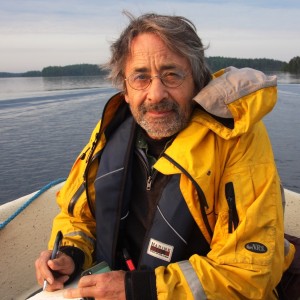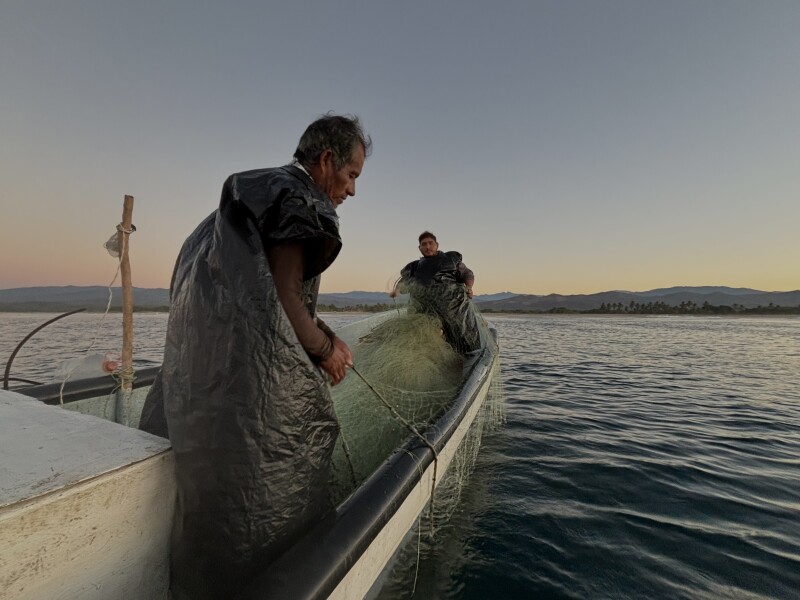On the southern coast of Mexico, fishermen work with what they’ve got and supply local markets.
We’ve all found a place to sleep in the 24-foot open boat, the Jania, out of Puerto Escondido in Oaxaca, Mexico. A gillnet stretches 500 meters toward shore, where the big breakers crash on the sand and send up geysers of foam illuminated by the waxing moon. Offshore, the sound of humpback whales blowing seeps into our dreams. Luis Escamilla, our captain, lies comfortably across the thwart in the stern. His crewman, Diego de Leon Franco, has made a nest of the anchor rode on the floor of the fiberglass skiff, and I am curled up on the hard foredeck with my sea bag for a pillow.
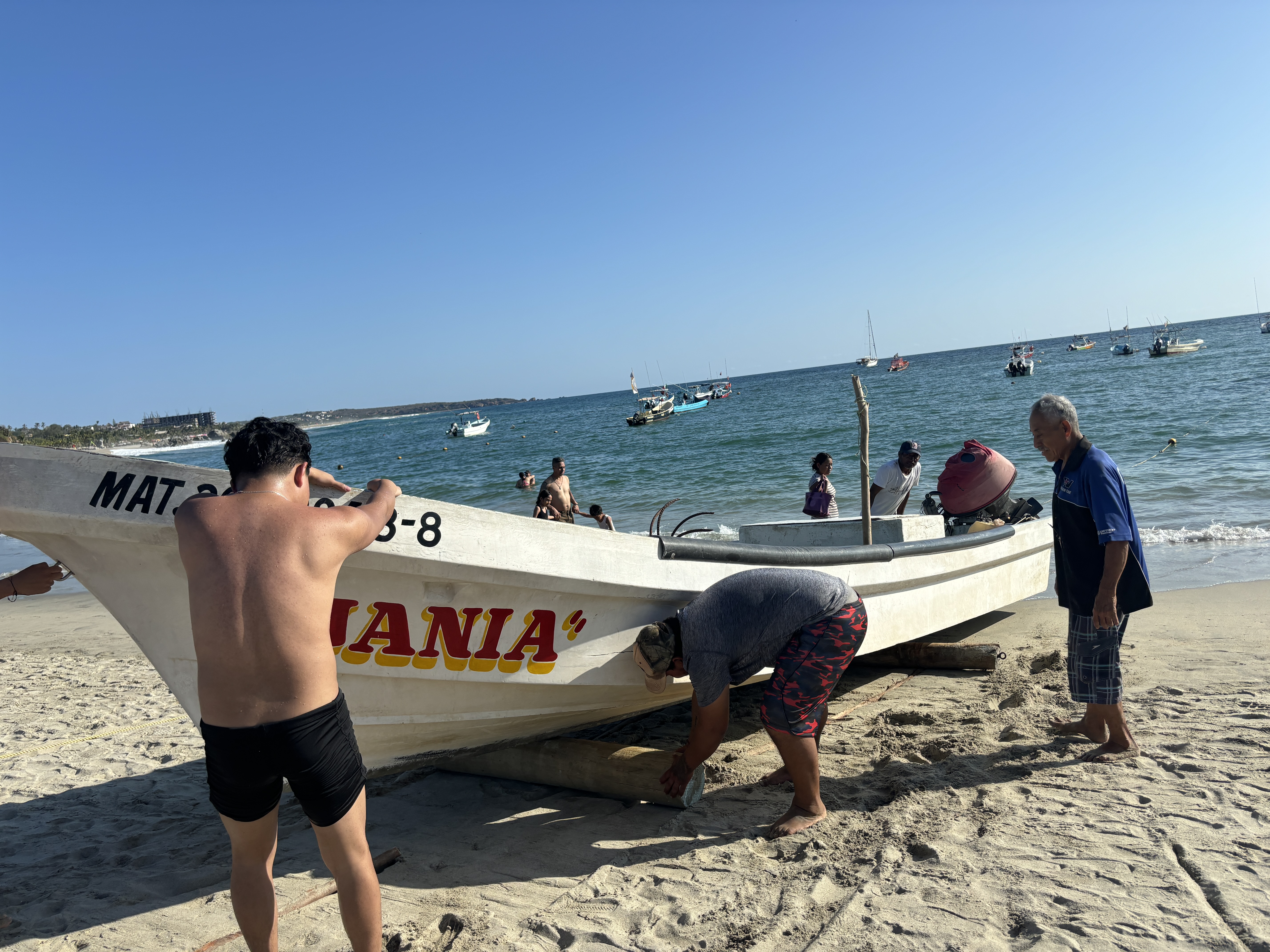
We had launched the boat a couple of hours earlier, pushing it down the beach over wooden rollers with help from other fishermen. Luis started up the 60hp Yamaha, and after a rough half-hour run west along the beach, we reached a spot he thought might be productive. “There’s a lagoon on the other side of the beach,” he’d said in Spanish. “When it rains, it floods, and there’s a lot of feed for the fish.”
He’s after, huauchinango—Pacific red snapper, Lutjanus peru.
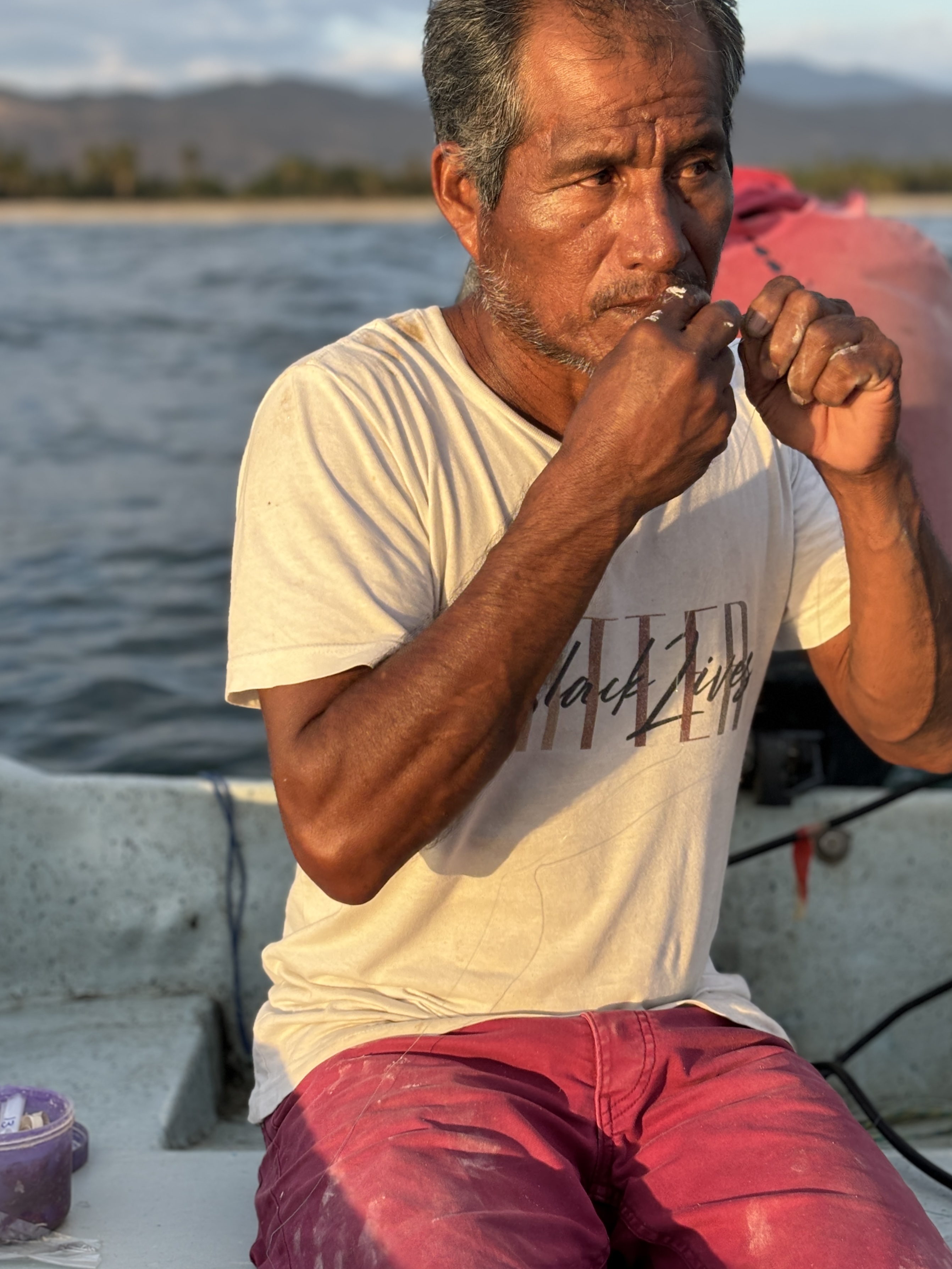
Waiting for the sun to go down, Luis made up a handline. He tied a swivel onto some monofilament and added a fathom and a half of finer line. With surprising speed, using his teeth to tie and cut the knots, he made four snoods, and using the same method with his teeth, he tied on four hooks and added green tread. “Green is for cosinero [barred jack], white is for huauchinango.”
While he worked, he told stories about how he started fishing when he was five, going with his grandfather in the lagoon, catching pargo, a snapper-like species that often frequents brackish waters and mangroves.
"When I was 12, I went for the first time on the ocean, fishing on other boats. My father and grandfather both fished in the lagoons. I’m the first one to fish on the ocean.”
He noted that his grandfather taught him to use marks on shore and the stars to fix his position and mark the time.
Near dark, he put the handline aside and used a leadline to check the depth and direction of the current. “We set across the current,” he said. The fish swim against the current, looking for food, and hit the net.”
He signaled Diego to toss the first anchor buoy overboard. As the buoy slowly floated away, Diego tossed an anchor made of five pieces of rebar welded together with the ends bent out like the petals of a flower. Diego hauled on the anchor line until it grabbed.
"The bottom is sand and mud,” Luis said. “Just a few rocks.”
He put the engine in reverse and backed away from the anchor as the net paid out over the starboard side. The corks went over easily near the bow while Diego fed out the lead line. Slowly, Luis backed the boat. Every now and then Diego pulled the lead line tight. After about 10 minutes, he came to the end of the net. He tossed another anchor and then tied it off to the bow.

No sooner was the line made fast than Luis took his blanket out and stretched across the aft thwart. In the fading light, Diego caught a few small cosinero with the handline. I found my spot to lay down in the bow.
I’m now trying to get comfortable there and more or less manage. Finally, I drift off between the waves and the whales. The cosmic clock wheels from horizon to horizon, and when Orion is overhead — 9 p.m. — Luis rouses us. He has no watch, no compass, no electronics other than a single light bulb hooked up to a car battery and tied to a wooden pole on the port rail.
Diego and Luis don plastic trash bags in lieu of rain gear. It’s kind of an improvisational fishery conducted barefoot in the warm waters of the Pacific. There is no safety equipment aboard. No life jackets, no flares, no VHF, not even a cell phone. The assumption must be that if you get in a jam, you can swim the mile or so to shore, but I don’t ask.
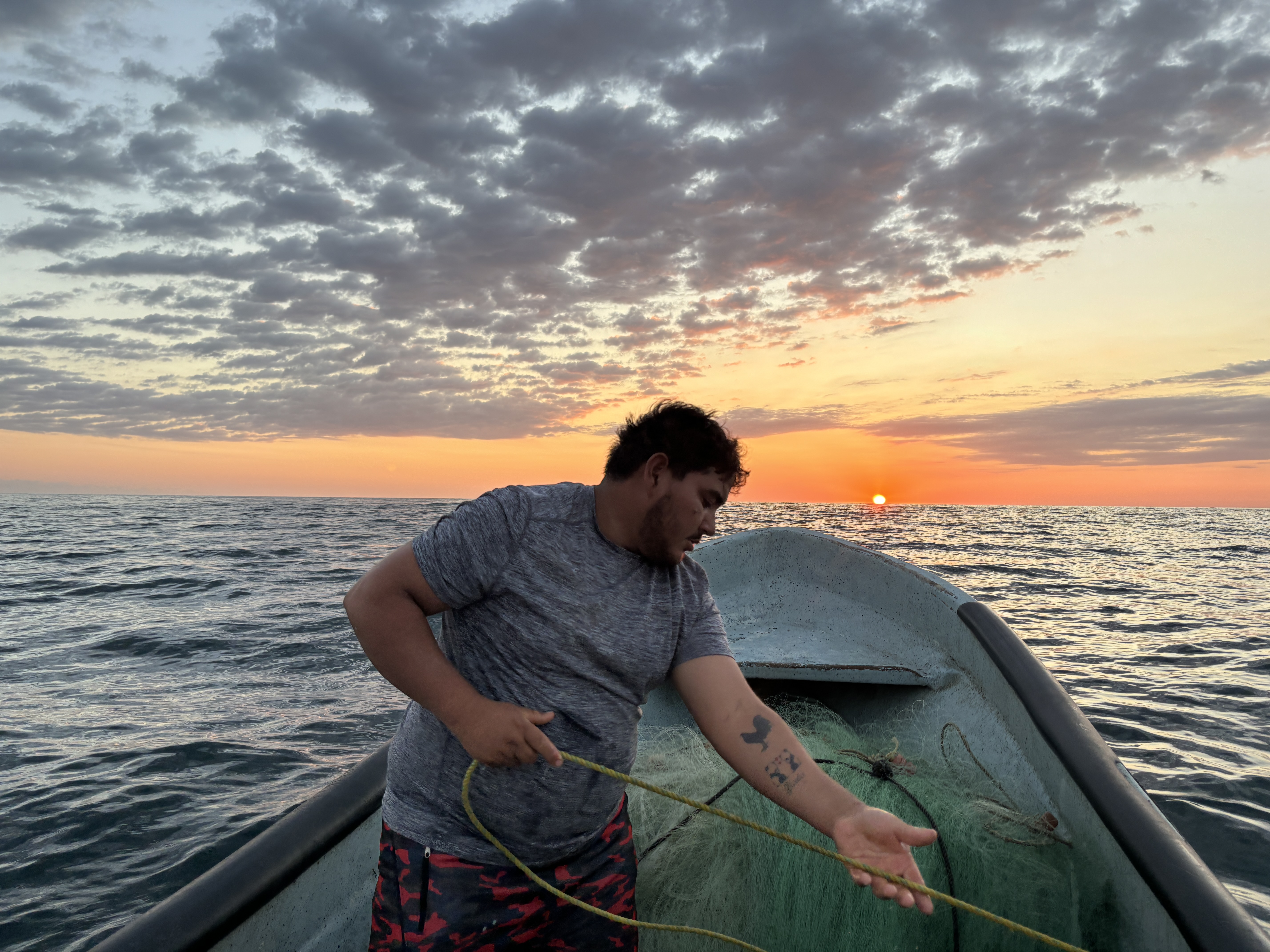
In the limited light, Diego leans over the bow and unties the buoy line. Together, he and Luis pull the anchor aboard and start to haul the net. Diego, at the bow, pulls in the cork line, and Luis, aft, pulls the lead. “In your country, do you have machines to do the work? Luis asks me.
"A lot of it,” I say.
"Here, we use our arms,” he says. He has time to chat because the net is empty for the first 100 meters.
But fish start to show: a few huauchinango, some cosinero, madrigal [amberjack], the mackerel-like sierra, and a little tunny that Luis calls a “salmonete.”
The mesh size on the gillnet is a little less than 4 inches stretched. Luis says it would be rare but not impossible to catch a huauchinango that weighed a kilo in these depths. “Usually, it’s three or four to a kilo.”
The price? “About 100 pesos a kilo,” he says—about $2.50 a pound.
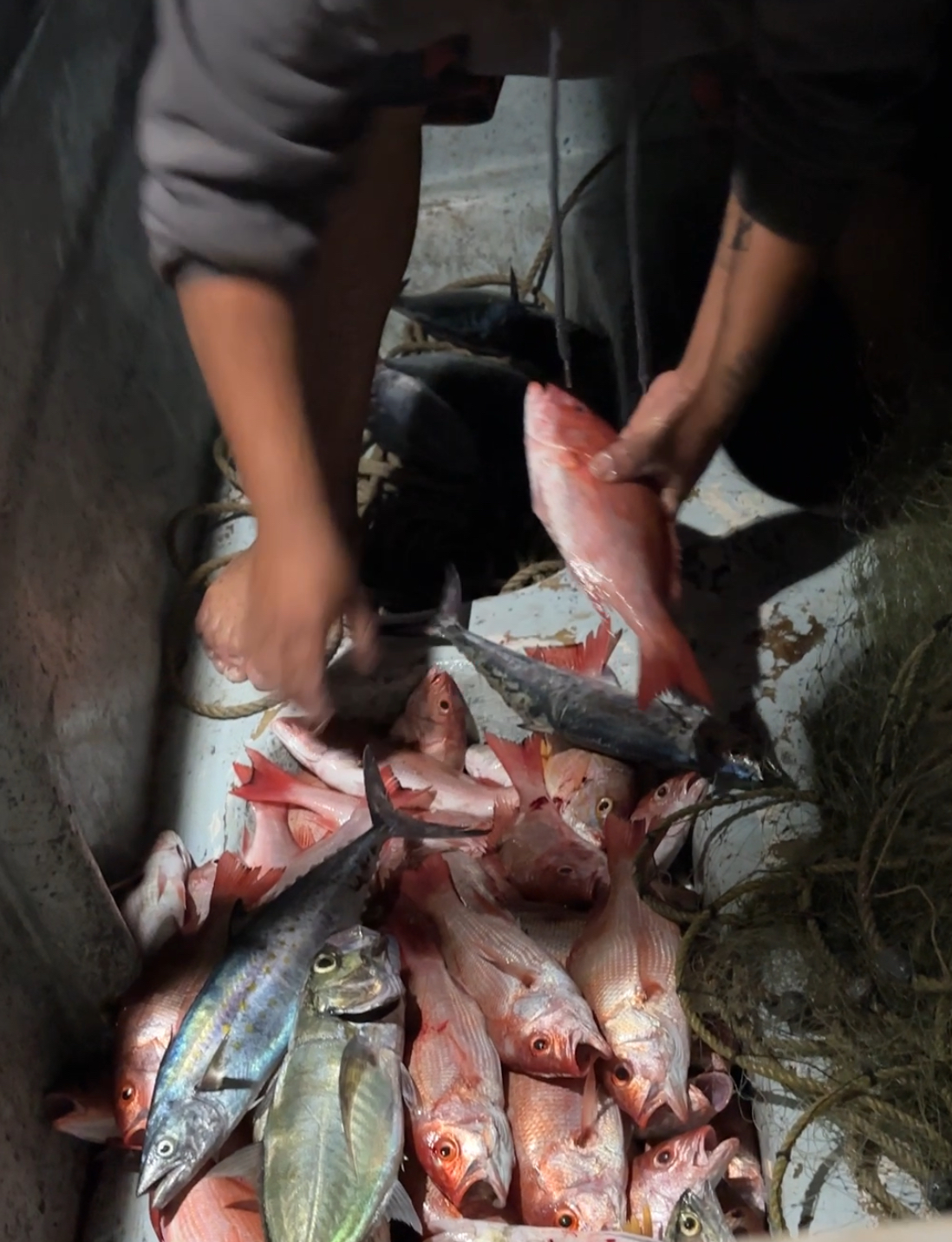
The fish start coming steady, mostly down near the lead line where Luis deftly untangles them from the web and tosses them on deck. But by the time the anchor and buoy come aboard, they have a pile of about 40 kilos of mostly huauchinango. “It’s about average,” Luis says. “We’ll set again at 4 a.m. and get another 15 kilos.”
Diego dumps a 40-pound bag of ice into the fish box amidship and measures the catch in a box that holds about 50 kilos when full. He dumps the fish onto the ice and covers them with another 40 pounds of ice.
While Diego works, Luis asks about Alaska. “It’s my dream to go up there and fish salmon,” he says. “I almost went. They called me but I wasn’t home, and when I got home they had found somebody else. I missed my chance by half an hour.”
"I’ll let some folks know,” I tell him.
"Diego, too,” he says.
With the fish on ice and the net stowed aboard, we all return to our improvised bunks. “You have beds on the boats in your country?” Luis asks.
"Usually,” I tell him. “They’re not very wide, but wide enough.”
Fishing with Luis is like going back in time, to being governed by the stars instead of a clock. He notes that the moon will disappear at about 1 a.m., and Orion will touch the horizon around 4 a.m. “That’s when we’ll set again,” he says.
The moon is gone and Orion is about to disappear when Luis calls us to wake up. I check my phone: 4:05 a.m. He and Diego repeat the setting procedure, this time a little closer to shore. “The depth is about 3 fathoms,” Luis says. “The net is about 2 fathoms deep.”
He points east. “When we see some red there, we’ll haul he net.”
After another nap, Luis and Diego round haul the net, leaving the fish in the net piled in the boat. It looks like a good catch, about 20 kilos, Luis reckons, but this time the last hundred meters of the net are empty.
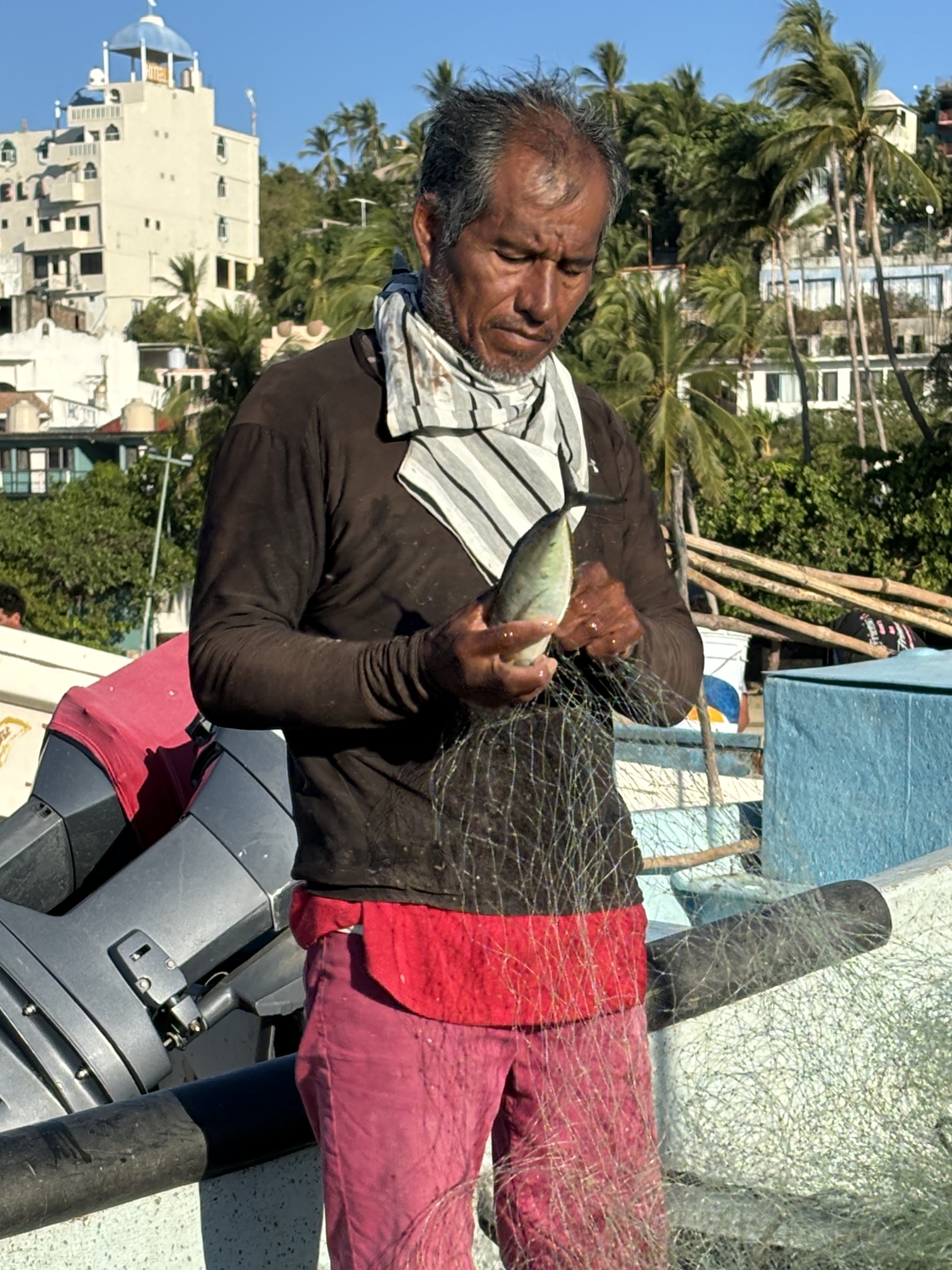
With the sun rising, Luis opens up the Yamaha and the Jania flies over a smooth sea back to the beach. Other boats have already arrived, and the beach hums with activity; crowds of people carrying bags and buckets gather around the boats.
Luis drives the boat up to the beach and orders Diego and me to jump. My first time at this maneuver is graceless. I land on all fours in knee deep water but manage to keep my phone dry. By the time I reach our empty slot among the skiffs that have already landed Diego has laid down a path of thin poles, and Luis is racing across the harbor full throttle. He hits the beach, lifting the motor at the last minute as the boat skids up onto the sand.
A crowd forms around the Jania almost instantaneously. The owner of the boat, Polo Hipólito, and his wife are there, and she starts selling the fish as fast as people can grab them out of the box. From somewhere, a small plastic bucket of hot coffee appears, and Diego is handing me a cup.
Within half an hour, it’s over. I offer to buy some huauchinango to take home, but Polo won’t have it. “Take what you want. It’s a gift,” he says. I grab four fish, but he insists I take more. It’s something I’ve noticed, having done these stories all over the world, that fishing people are a big global family.




